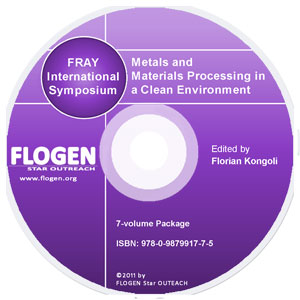
CD shopping page |
2011-Sustainable Industrial Processing Summit
|
| Editors: | Florian K |
| Publisher: | Flogen Star OUTREACH |
| Publication Year: | 2012 |
| Pages: | 708 pages |
| ISBN: | 978-0-9879917-1-3 |
| ISSN: | 2291-1227 (Metals and Materials Processing in a Clean Environment Series) |
Mechanism Of Phosphor Removal In Beneficiation Of High-phosphorous-content Oolitic Hematite By Reduction Roasting With Sodium Salt
Chengyan XU1; Tichang Sun1; Yongli Li1; Xiaolan Mo1; Dawei Yang1;1UNIVERSITY OF SCIENCE AND TECHNOLOGY BEIJING, Beijing, China;
Type of Paper: Regular
Id Paper: 105
Topic: 5
Abstract:
High-phosphorous-content oolitic hematite ore is one of typical intractable iron ores in China, and conventional beneficiation methods are found impracticable to remove phosphor from the ore effectively. In this study, it can get a better beneficiation index(P content decrease from 0.82% in raw ore to 0.06% in iron concentrate, and total iron grade increases from 43.65% to 90.23%,the recovery of iron can be reached 87%)by reduction roasting with addition of sodium salt followed by two stages of grinding and magnetic separation. Mechanisms of phosphor removal in the beneficiation of high-phosphorous-content oolitic hematite ore by reduction roasting with sodium salt as dephosphorization agent were studied using XRD, SEM, EMPA, and TG-DSC. It is shown that about 20% of the apatite in raw ore is transferred into phosphor and volatilized with the gas in the process of reduction roasting. The rest of apatite is not involved in the reaction of generation of phosphor, and remains in the roasted sample, which is removed to tailings by grinding and magnetic separation. A small amount of phosphor as the phase of apatite exists in wustite of iron concentrate. The oolitic texture of raw ore is partly changed by the reaction between the sodium salt, quartz and kaolinite, which generated sodium aluminosilicate during roasting, and then the apatite and iron produced in reduction roasting can be separated by the process of grinding and magnetic separation.